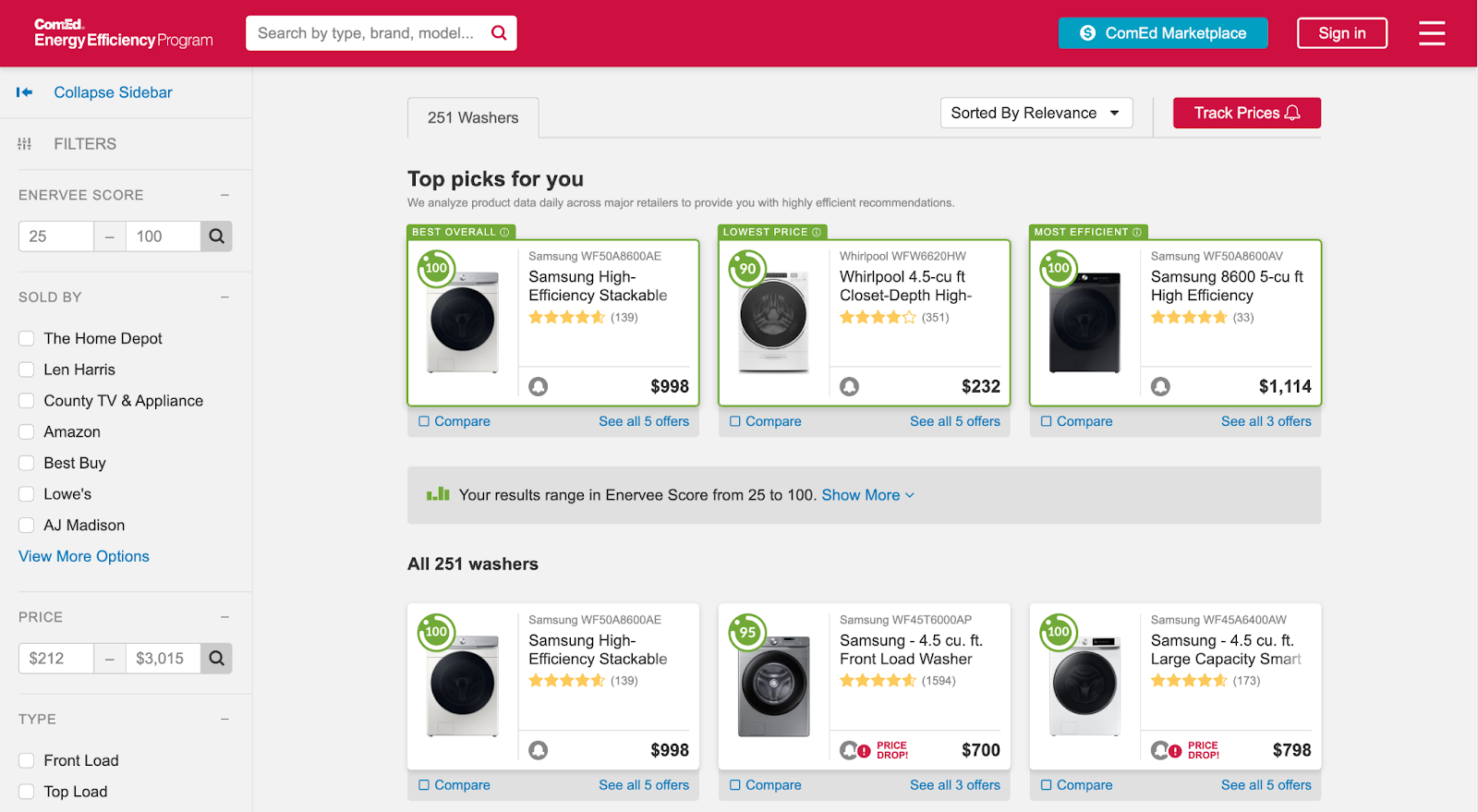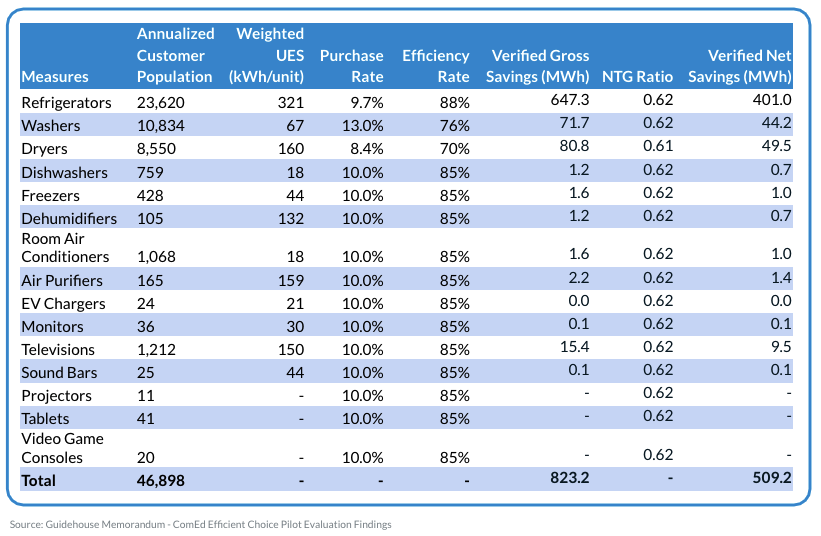The ComEd Efficient Choice online shopping platform—powered by Enervee and piloted by ComEd’s Emerging Technology team in 2020–2021—proved it can drive claimable energy savings without rebates. An independent evaluation by Guidehouse confirmed the impact, and ComEd has now approved Efficient Choice as an ongoing offering in its Energy Efficiency Program (2022 and beyond) [1].
Why this matters
For demand-side management leaders, the pilot demonstrated a scalable path to portfolio savings without incentives by removing market, cognitive, and psychological barriers at the point of decision. In short: a modern, utility-branded utility marketplace can nudge shoppers to efficient models—and quantify savings—without defaulting to rebates.
Headline results from the Guidehouse evaluation
- Rebate-free, claimable savings: 2021 savings were achieved and claimed without relying on product rebates.
- Scale of engagement: ~47,000 annualized active shoppers (visitors taking shopping actions like “Buy” clicks).
- Purchases: An estimated 3,920 products purchased across featured categories.
- Energy savings: 509 MWh net (after free-ridership), annualized from the 10-month pilot.
- Customer sentiment: 86% reported a more favorable opinion of ComEd after using Efficient Choice.
- Experience ratings: Satisfaction 8.6/10; favorability impact 8.0/10.
What was tested
The pilot assessed the evaluable energy savings of Enervee’s Choice Engine—delivered as “ComEd Efficient Choice”—and its fit for the ComEd portfolio without appliance rebates. Core Choice Engine features included model-level comparisons, a relative efficiency signal (Enervee Score), personalized lifetime cost of ownership, reviews, and direct retail links to purchase.

Scope & channels. The 10-month pilot focused on refrigerators, clothes washers, and clothes dryers. Outreach was 100% digital:
- Display ads targeting in-market shoppers with myth-busting “True or False?” creative, deep-linking to category pages.
- Paid search during peak shopping periods.
- Email for educational content and promotions, including “identify” surveys to find in-market shoppers.
- Data-informed drips nurturing known shoppers from research → comparison → purchase.
Methods and key figures
Guidehouse used two primary inputs to estimate savings:
- Survey-based conversion factors (purchase rate, efficiency rate, net-to-gross).
- Platform analytics to count unique active shoppers (visitors taking qualified shopping actions).
The evaluation met confidence/precision targets of 90/25 at the pilot level and 90/40 at the measure level for verified gross savings. Annualized results applied average conversion factors from the three pilot categories to the full set of site categories.

Cross-participation note. For categories overlapping with ComEd’s Appliance Rebate Program (e.g., refrigerators, washers, dryers, air purifiers, dehumidifiers, freezers), pilot-year reporting assigned rebated product savings to the rebate program. Even under that constraint, Efficient Choice demonstrated clear, rebate-free savings.
Customer experience & usefulness
- Satisfaction: 8.6/10 (“How satisfied are you with your ComEd Efficient Choice experience?”)
- Utility favorability: 8.0/10 average impact; 86% reported a more favorable opinion of ComEd.

Bottom line: Efficient Choice made appliance purchases quicker, easier, and more efficient for ComEd customers—and did so in a way that program administrators can evaluate and claim.
Reference
[1] Online Choice Engine Program Model (ComEd Emerging Technology).
